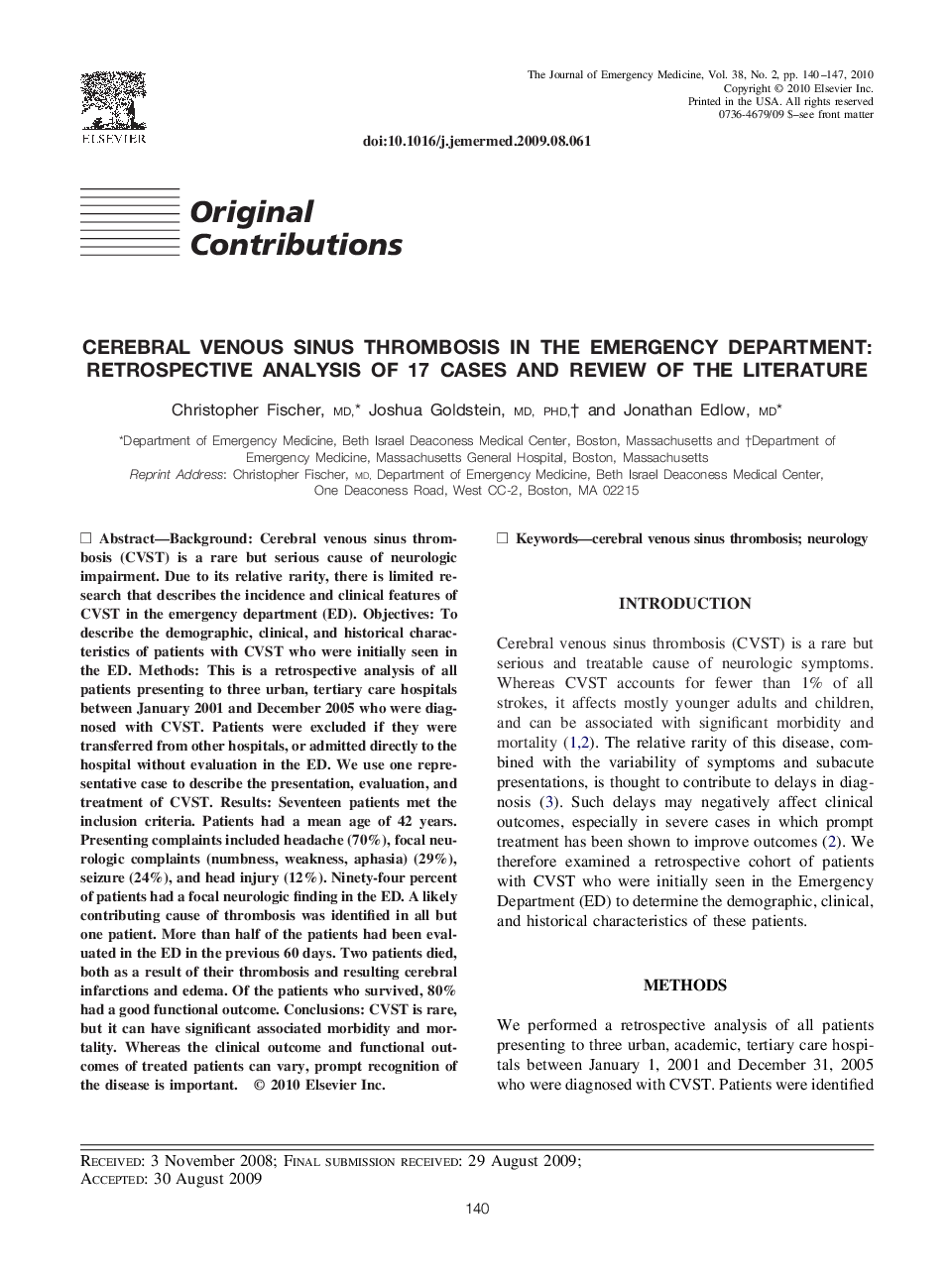| Article ID | Journal | Published Year | Pages | File Type |
|---|---|---|---|---|
| 3249374 | The Journal of Emergency Medicine | 2010 | 8 Pages |
Background: Cerebral venous sinus thrombosis (CVST) is a rare but serious cause of neurologic impairment. Due to its relative rarity, there is limited research that describes the incidence and clinical features of CVST in the emergency department (ED). Objectives: To describe the demographic, clinical, and historical characteristics of patients with CVST who were initially seen in the ED. Methods: This is a retrospective analysis of all patients presenting to three urban, tertiary care hospitals between January 2001 and December 2005 who were diagnosed with CVST. Patients were excluded if they were transferred from other hospitals, or admitted directly to the hospital without evaluation in the ED. We use one representative case to describe the presentation, evaluation, and treatment of CVST. Results: Seventeen patients met the inclusion criteria. Patients had a mean age of 42 years. Presenting complaints included headache (70%), focal neurologic complaints (numbness, weakness, aphasia) (29%), seizure (24%), and head injury (12%). Ninety-four percent of patients had a focal neurologic finding in the ED. A likely contributing cause of thrombosis was identified in all but one patient. More than half of the patients had been evaluated in the ED in the previous 60 days. Two patients died, both as a result of their thrombosis and resulting cerebral infarctions and edema. Of the patients who survived, 80% had a good functional outcome. Conclusions: CVST is rare, but it can have significant associated morbidity and mortality. Whereas the clinical outcome and functional outcomes of treated patients can vary, prompt recognition of the disease is important.
